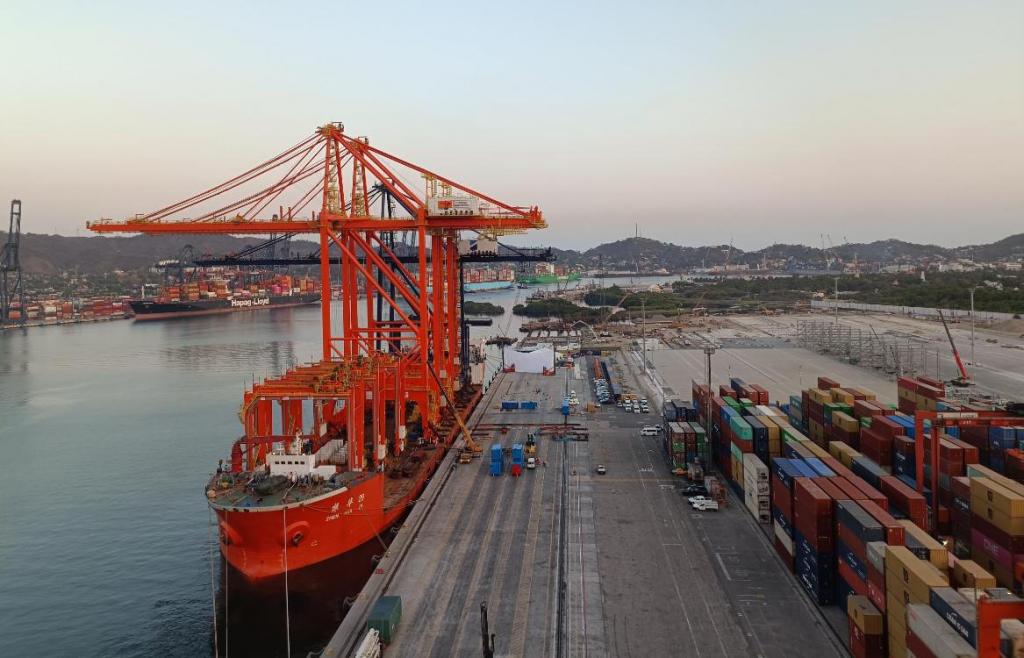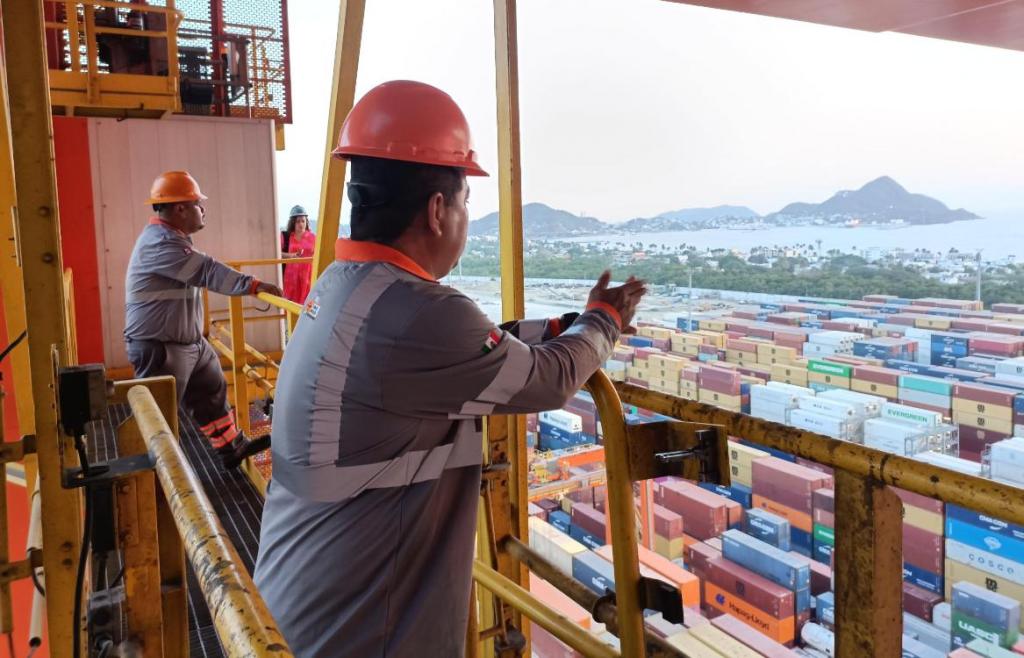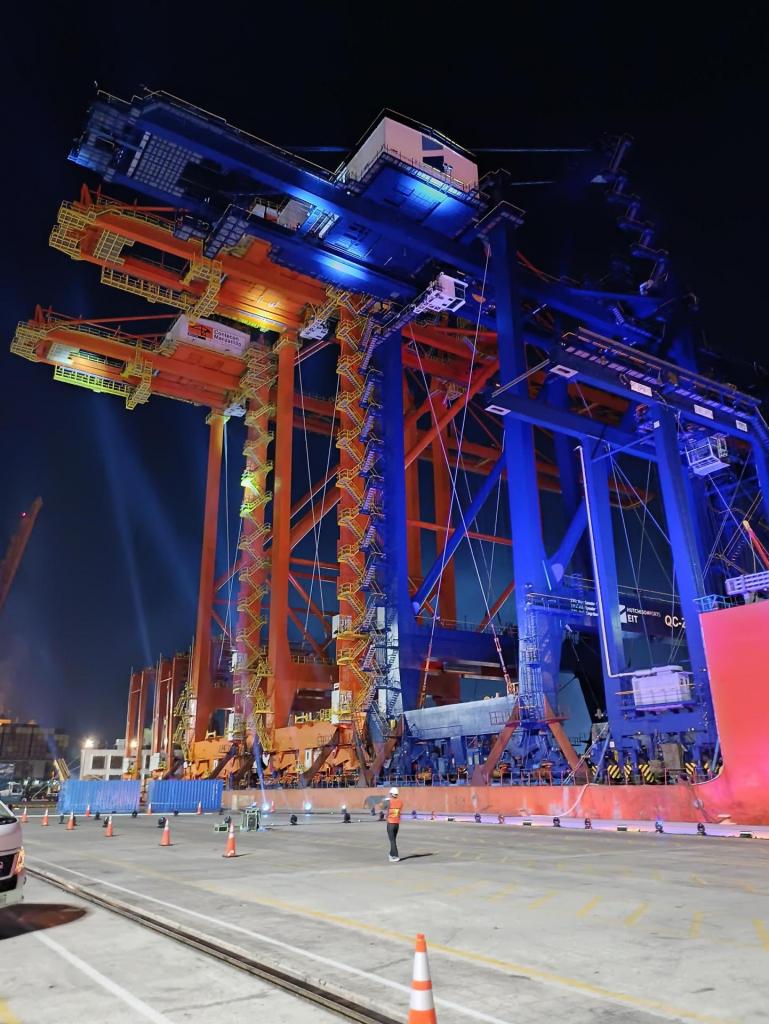
Manzanillo, Col. – The Wait is Over Contecon Manzanillo has become the first container terminal in the Americas to operate with two 60-meter-high STS cranes, considered the largest and most modern in the world.
This new equipment will help achieve the expansion plans that Contecon Manzanillo has outlined for the country’s most important port and marks a watershed moment for the development of logistics and international trade.
During the unveiling, José Antonio Contreras, CEO of Contecon Manzanillo, explained that the commencement of crane operations signifies the beginning of a new era for Contecon, not only in terms of facilities, equipment, and technology, but also in fostering closer relationships with cargo owners.
The terminal’s plan is to increase its annual operation from 1.4 million twenty-foot equivalent units (TEUs) to more than 2.2 million TEUs, aided by the new cranes and the ongoing expansion of the Specialized Container Terminal (TEC) II.
“This must be accompanied by new access points and increased customs capabilities, along with better coordination among all parties involved. It is unacceptable that a port like this has had the same access and evacuation capabilities for the past 10 years, while terminals and trade continue to grow. However, I believe we have all taken responsibility and share a common goal of advancing this great port of Manzanillo,” stated Contreras.

In an interview with T21, José Antonio Contreras detailed that the Mexico-Asia trade exchange continues to grow exponentially at an increasing pace. He noted that due to this dynamism, the size of the ships is also increasing. Four years ago, only 10% of the ships arriving in Manzanillo were over 350 meters long; by 2024, nearly 50% of the ships are over 350 meters and up to 400 meters long. “We believe this is a trend that will continue to accelerate,” he said.
“We bought these STS cranes two years ago because we believe that Manzanillo should have this capacity. If you don’t have a dock designed for these ships and a crane that can operate them, Mexico would suffer as it would be excluded from international traffic,” he asserted.
The CEO of Contecon Manzanillo explained that the port receives semi-finished products for manufacturing in Mexico, which are then exported to the United States, serving industries such as automotive, electronics, and textiles. “But domestic consumption is also growing; we’ve seen a 70% increase when comparing the first quarter of 2020 to the first quarter of 2024,” he said.
During the unveiling of the STS cranes, considered the largest in the Americas at 60 meters high and designed to operate the world’s largest container ships, Mario Gasque Peña, Director General of the National Port System Administration (Asipona) Manzanillo, explained that the arrival of this equipment marks a significant milestone in the growth of the port’s operations. Last year, 22.6 million tons of containerized cargo were moved, and in the past 10 years, the port’s throughput has grown from 2.1 million to 3.7 million TEUs, making it the busiest container port in the country.
“This action (the commencement of crane operations) not only strengthens the infrastructure of a dock but ensures that the port of Manzanillo continues to be a fundamental pillar of Mexico’s economy and a benchmark in Latin America. It is also a clear demonstration of the confidence in our port and its future—a promising port. The increased cargo capacity and operational efficiency will allow us not only to maintain but surpass our position as the port handling the most containers in Mexico and advance among the most dynamic ports in Latin America,” affirmed Gasque Peña.

Expansion Plans
To date, Contecon Manzanillo has invested over 5.7 billion pesos in infrastructure and 3 million pesos in equipment. “We are investing more than 4.6 billion pesos to realize this new era for Contecon, which in its first phase from 2022-2024 includes the construction of 180 meters of docks, storage yards for up to 260,000 TEUs, the installation of over 900 additional reefer plugs, as well as 13 RTG cranes and two new super Post Panamax dock cranes capable of operating 24,000 TEU mega vessels,” Contreras detailed.
The second phase, from 2024 to 2025, involves the construction of an additional 227 meters of docks, storage yards for up to 275,000 TEUs, and the acquisition of two super Post Panamax dock cranes and six RTG cranes. These investments will enable the terminal to expand its capacity from 1.4 million to over 2 million TEUs.
The expansion project also includes the enlargement of the intermodal facility, which will double the current 2 km to nearly 5 km by 2025. This will allow Contecon to operate dedicated unit trains with 120 cars, speeding up the movement of goods, reducing transit times, and improving transportation costs.
Additionally, the construction of a new access road to Contecon, nearly 3 km of dual carriageway, will streamline truck transit times and expedite the dispatch and reception of containers.
















